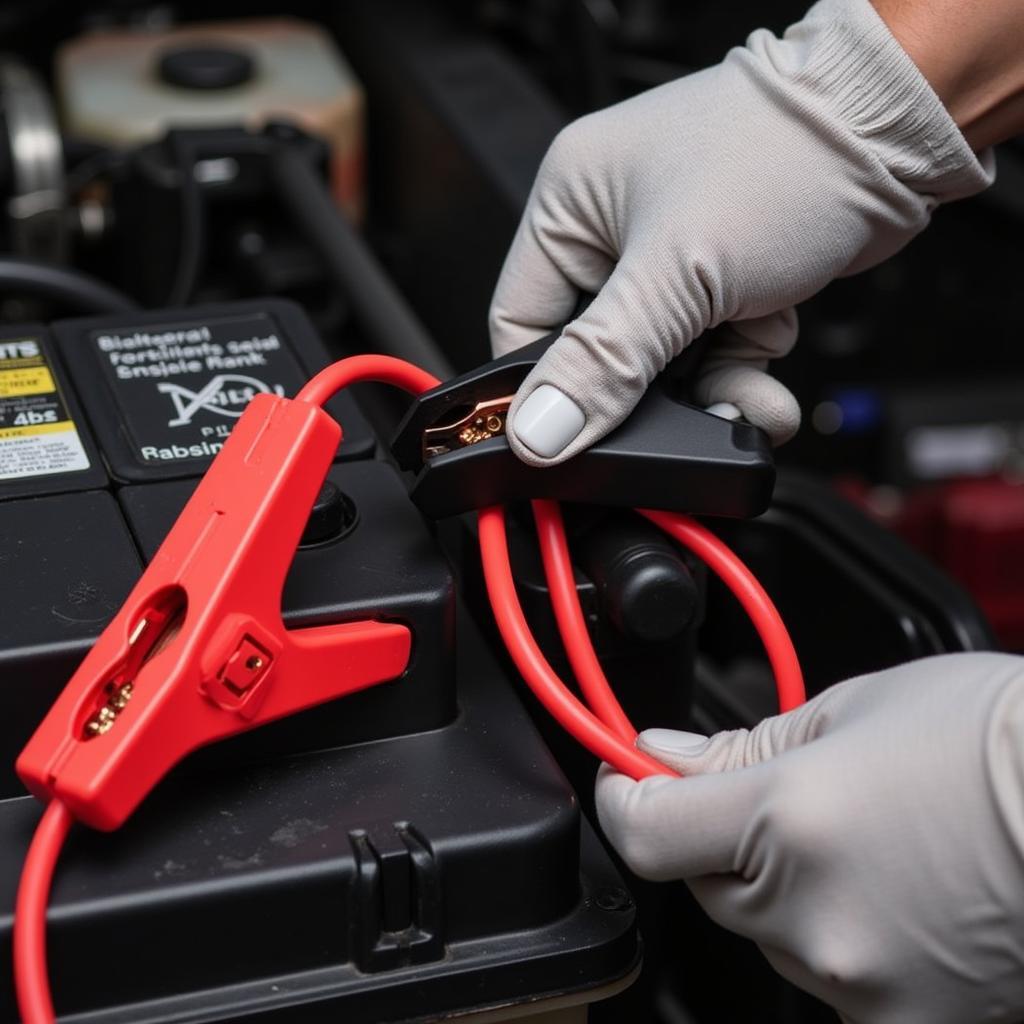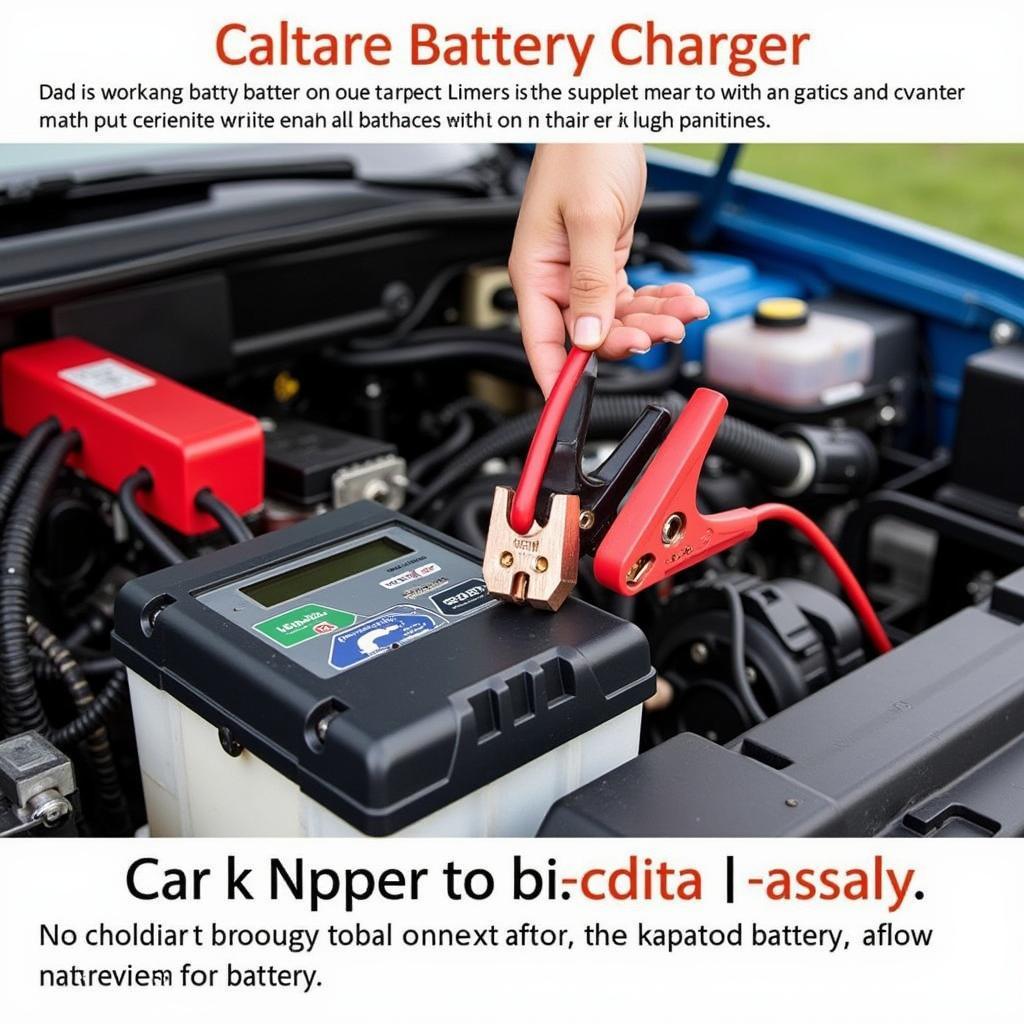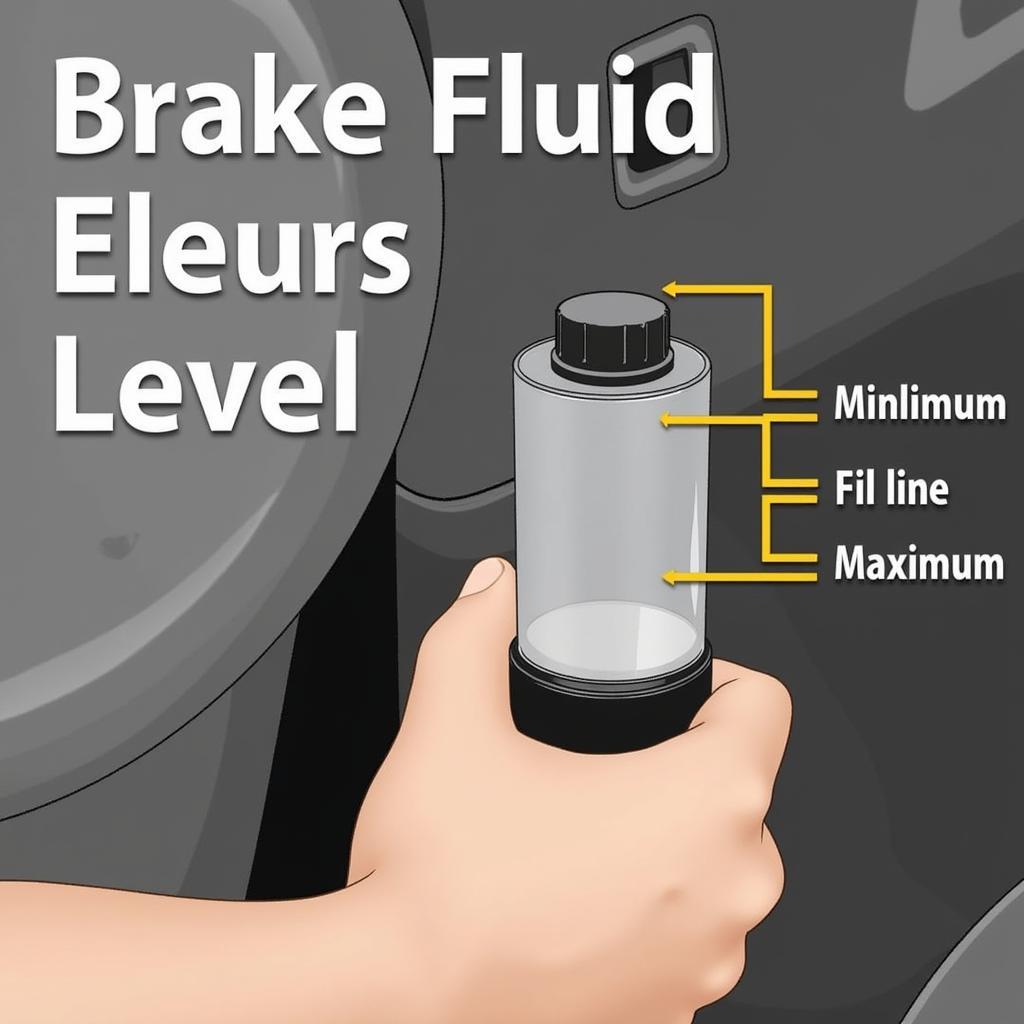A dead car battery is a common frustration, leaving you stranded and needing a quick solution. Knowing how to properly charge a dead car battery with a charger is essential car ownership knowledge. This guide provides a comprehensive walkthrough, from safety precautions to step-by-step instructions, ensuring you can revive your battery safely and effectively. This information will also help you troubleshoot some common charging issues and understand how to maintain your battery for optimal performance.
 Connecting Jumper Cables to a Dead Car Battery
Connecting Jumper Cables to a Dead Car Battery
If you’ve ever experienced a completely dead battery, you understand the frustration. Thankfully, understanding how to charge a dead car battery can be easily mastered. Many people search for information about a “battery totally dead” situation, and this guide will address just that.
Preparing to Charge Your Dead Battery
Before you begin charging a dead car battery with a charger, safety is paramount. Ensure you have the right tools and take necessary precautions to prevent accidents. Gather your car battery charger, safety glasses, gloves, and a baking soda and water mixture (in case of acid spills). Park your car in a well-ventilated area, preferably outdoors, away from flammable materials.
Safety First When Charging a Dead Car Battery
Always wear safety glasses and gloves to protect yourself from battery acid and potential sparks. Make sure the charger is off before connecting it to the battery. Never smoke or use open flames near the battery while charging.
 Car Battery Charger Connected to Terminals
Car Battery Charger Connected to Terminals
If you’re wondering, “My car battery dies quickly,” charging might be a temporary fix. You might want to consider addressing the underlying cause. For more information on frequently discharged car batteries, you can read my car battery dies quickly.
Connecting the Charger Correctly
With safety measures in place, you can proceed to connect the charger. Identify the positive (+) and negative (-) terminals on your battery. Connect the red (positive) clamp of the charger to the positive terminal of the battery and the black (negative) clamp to the negative terminal. Double-check the connections to ensure a secure fit.
Understanding Battery Terminal Connections
Correct connection is crucial for a successful charge. Reversing the polarity can damage your battery and charger. If you’re unsure about your battery’s condition, consider reading about charging a fully discharged car battery.
Starting the Charging Process
Once the connections are secure, turn on the charger. Most chargers have indicator lights to show the charging progress. Monitor the charger regularly to ensure it’s functioning correctly. The charging time depends on the battery’s size and level of discharge, but it can typically take several hours.
How Long Should I Charge My Battery?
Overcharging can damage the battery, so it’s essential to monitor the charging process. Consult your charger’s manual for recommended charging times. If after charging your car battery, you find that i charged my car battery and now it wont start, there might be an underlying issue requiring further diagnostics.
Disconnecting the Charger
After the battery is fully charged, turn off the charger before disconnecting the clamps. Disconnect the black (negative) clamp first, followed by the red (positive) clamp. Clean any spilled acid with the baking soda and water mixture.
Troubleshooting and Maintenance
Sometimes, even after charging, the car might not start. This could indicate a deeper issue, like a faulty alternator. You might need professional diagnostics in such cases. Regular battery maintenance can prevent future issues. Cleaning the terminals and checking the electrolyte levels can significantly extend your battery’s lifespan. If you have a golf cart and are facing similar battery issues, club car golf carts troubleshooting might offer some helpful insights.
Conclusion
Charging a dead car battery with a charger is a straightforward process when done correctly. By following these steps and prioritizing safety, you can effectively revive your battery and get back on the road. Remember to perform regular battery maintenance to prolong its lifespan and prevent future dead battery situations.
FAQ
- What do I do if my car battery is totally dead? You can jump-start it using another car or charge it with a battery charger following the steps outlined in this guide.
- How long does it take to charge a dead car battery? It usually takes several hours, depending on the battery’s size and discharge level.
- Can I overcharge my car battery? Yes, overcharging can damage the battery. Monitor the charging process and disconnect the charger once the battery is fully charged.
- What if my car still won’t start after charging the battery? This may indicate a more serious issue, such as a bad alternator, and requires further investigation.
- How can I maintain my car battery? Regularly cleaning the terminals and checking the electrolyte level can help extend the battery’s life.
- Is it safe to charge a car battery in the rain? It’s best to avoid charging in the rain to prevent electrical hazards.
- What type of charger should I use for my car battery? Use a charger specifically designed for automotive batteries, and always follow the manufacturer’s instructions.

